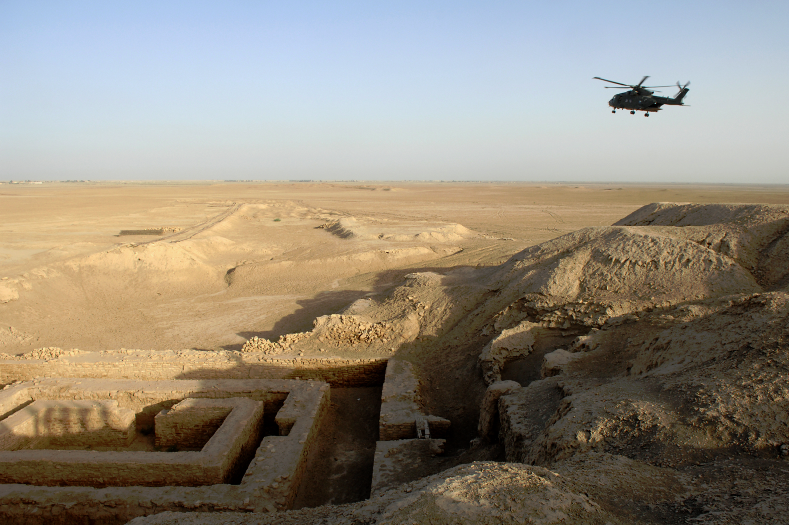
How much butter in a “box” according to the Department of Agriculture? More than you might think. Keep reading.
It’s fall again here in sunny New Mexico. It’s also time for the annual selling of massive amounts of green chile for which my state is famous. I wrote back in 2015 about the fact that you can still buy green chile by the bushel here.
Apparently, it’s not the only agriculturally based measure still used within the farming community when it goes almost directly to the consumer without repackaging. Not long ago I stopped at the local farmer’s market and bought some peaches. It wasn’t until I got home that I saw the paper bag contained the produce quantity that was labeled as ½ peck.

Notation on a bag of recently purchased peaches at a farmer’s market.
Had I not been able to see for myself how many peaches I was buying at the time, I would have had no idea what the volume of a peck could have been. A few days later I realized that the large boxes of chiles the grocery store were selling was also only listed by the bushel. (For the record, a “general” bushel is equivalent to 64 U.S. pints while a peck is the equivalent of 8 U.S. quarts. Ironically, the source I got this information from, Leico.com [which is a new collaboration between Dictionary.com and Oxford University Press], doesn’t even use the same base measurements so you also have to know that there are two pints in a quart so there are 64 pints in a bushel and 16 pints in a peck…) Confusing.
When I go to the grocery store, I normally only buy produce by the item, ounce, or pound. Bushels and pecks aren’t volumetric measures I normally use at Kroger or elsewhere.
 That got me curious about other agricultural products that I might not normally use. After a bit of research, I came across a publication put out by the Department of Agriculture called “Weights, Measures, and Conversion Factors for Agricultural Commodities and Their Products.” (Agricultural Handbook Number 697). The 71-page document is dated 1992, but it was the most recent one I could find, so I used it for this post.
That got me curious about other agricultural products that I might not normally use. After a bit of research, I came across a publication put out by the Department of Agriculture called “Weights, Measures, and Conversion Factors for Agricultural Commodities and Their Products.” (Agricultural Handbook Number 697). The 71-page document is dated 1992, but it was the most recent one I could find, so I used it for this post.
The document numerous lists of units described in all their gory detail. Sure, some are familiar to most of us, but it also includes long tons (1.016 947 metric tons) and short tons (0.907 185 metric tons).
But it gets even more fun since bushels are different sizes depending on the commodities measured.
- Wheat, white potatoes, and soybeans use a 60-pound bushel;
- Shelled corn, rye, sorghum grain, and flaxseed use a 56-pound bushel;
- Barley, buckwheat, and apples use a 48-pound bushel.
Not only that but for some reason, there are both 32- and 38-pounds bushels of oats!

Huh? Two different bushels of oats?
Plus, once you wrap your head around that there is also a carton of artichokes (23 pounds/10.4 kg), the sack of topped beets (25 pounds/11.3 kg)—unless you’re talking about a sack of beans, which then contains 100 pounds or 45.4 kg.
Broomcorn (and it notes there are 6 bales per ton) is 333 pounds per bale or 151 kg. However, don’t get this confused with Broomcorn seed which is sold by the bushel and can be anywhere from 44-50 pounds (20-22.7 kg) according to the brochure. I love precision, don’t you?
Let’s not forget butter, which is sold by the box, of 68 pounds or 30.9 kg.
Gallons aren’t treated much better. A gallon of castor oil is 8 pounds (3.6 kg), but a gallon of corn syrup is 11.72 pounds (5.3 kg).
Then there is the lug, which for Western grapes 28 pounds or 12.7 kg, but if you are measuring avocados, that lug is 12-15 pounds or 5.4-6.8 kg.
There are more complications, of course, like the 7/10-bushel carton of Texas oranges (40 pounds), while Florida oranges are sold by the 4/5-bushel carton (40 pounds). But the California and Arizona oranges are sold by the carton of 38 pounds.
I can only imagine the politics of how this came to be.
Hopefully, I’ve now made my point which is: our current system of gallons, bales, bushels, pecks, boxes, cartons, and lugs, plus our ounces, pounds, cups, quarts, teaspoons, tablespoons, and pints, (and I didn’t even get to the bag, barrel, pocket/bag, hogshead, case, crate, and bin) is just crazy and the fact that some argue our current system is easier can only be offered by someone who is unaware of our current, deeply flawed units.
That said, just made sure if you send someone to the store for a box of butter, the person won’t return with 30.9 kg (69 pounds) of it.
See you next month when I’ll have a call to action regarding our government and the metric system. Maybe you can help.
Thanks for staying tuned.
Linda


